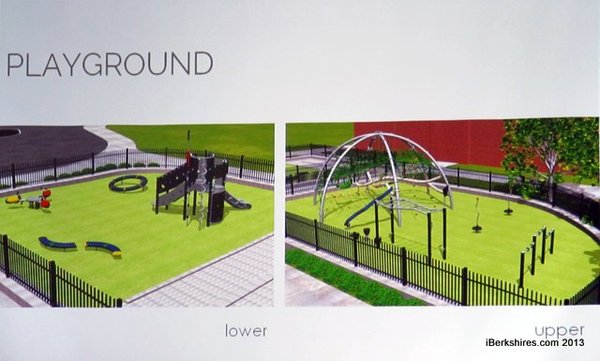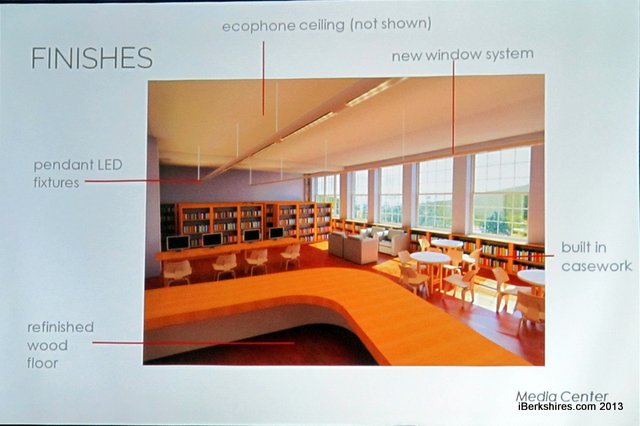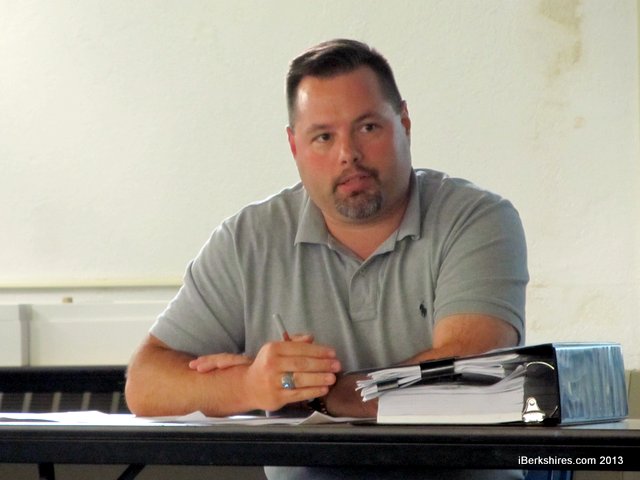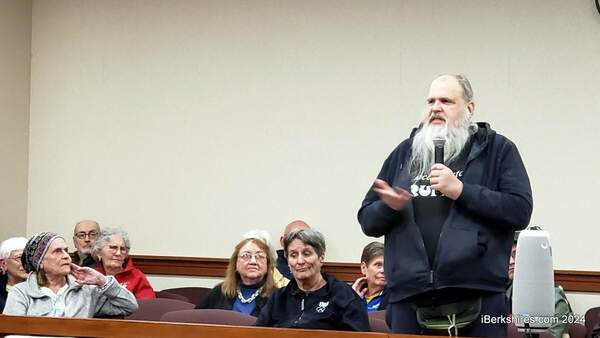
Conte School Renovation Costs, Designs Reviewed
 The project designers are envisioning bright contemporary spaces that also highlight the building's historic characteristics. The project designers are envisioning bright contemporary spaces that also highlight the building's historic characteristics. |
NORTH ADAMS, Mass. — The School Building Committee reviewed a number of areas of the Conte School project on Monday night, but not before officials cleared the air about rumored overruns.
Last month, the committee had eliminated two elements to the project it found unnecessary expenses and identified $500,000 more for possible trimming based on current estimates to keep the budget at the authorized $30 million.
"The perception around the community ... is that this project is already significantly overbudget," said Mayor Richard Alcombright, asking the owner's project manager to clarify "how this really works."
"Maybe we just need some reassurance we're not in a bad place."
Kenneth J. Guyette, a senior project manager with Strategic Building Solutions, assured the committee that they were not.
"This is part of the process; this is what design development and, again, the reconciliation process is all about," he said.
The project is going through a number of reviews by independent estimators and by the Massachusetts School Building Authority. At each step, items will be identified to be removed or added to the project when the final bid is selected.
"Given the favorable climate we've seen so far in the last couple of years on these projects, more than likely there's a good chance we may not have to deduct any of those add-ons," Guyette said. "We are tasked by the MSBA that this project will be on budget by the time it goes out to bid."
The project could potentially go over in two categories: because of design deficiencies or unforeseen conditions, which the MSBA would review and determine if reimbursable, or add-ons at the owner's discretion that would not be reimbursable.
What won't be coming out is the problematic retaining wall on the southwest edge of the property. "It's clearly evident that something needs to be done," said Guyette. The amount of site work at the property could "disturb it enough so it may collapse."
The wall project could be bid separately but SBS is recommending keeping it in the school bid package to avoid competing contractors onsite and to save on costs.
The design development submission has gotten "positive" feedback from the School Building Authority.
"We got the MSBA review comments, they came in today, they were very positive," said Dorrie Brooks of Margo Jones Architects, filling in for Jones. There were some minor queries on specific items and some suggestions about the kitchen and science rooms, she said.
The plan has passed a number of major milestones, including approval of the Planning Board last week. The stairs on the west side of the building and Colegrove Park have not yet been resolved.
 Kenneth J. Guyette of SBS explained the budgeting and reconciliation process. Kenneth J. Guyette of SBS explained the budgeting and reconciliation process. |
The Historical Commission is questioning a plan to remove the lower stairs and the two sets of upper stairs; last fall, commissioners had given the OK for a playground and ramps for access at the site.
"It was quite a dramatic change and surprised them," said Brooks, because final plans hadn't been determined yet. "We almost went to them too early in the process."
The mayor agreed, saying he had apologized for the oversight. However, he said he has asked the commission to focus on the historical aspects of the site and not on the possibilities of playgrounds or other uses that fall outside its purview.
The commission had also asked for a ruling from the city solicitor on whether state school funds could be used on the city-owned park. John DeRosa opined that "because the Project envisions no changes to Colgrove Park that are in any way inconsistent with its ongoing use as a public park, then Project funds may be used for improvements and changes to the Parcel."
The Historical Commission will take up the issue of the stairs when it meets on Wednesday at noon.
Julie Sneizek of Guntlow & Associates said the playground subcommittee had reviewed four possible options for playground equipment and three for groundcover — wood mulch or bark, shredded rubber or artificial grass. Both artificial covers are more expensive but last longer with less maintenance, said Sneizek. Facilities Director Matthew Neville spoke in favor of wood bark, saying it was cheaper and easier to maintain in cases of contaminents such as animals.
"There is an infinite number of possibilities," said Sneizek, adding that the playgrounds should be safe, exciting, state of the art and conducive to play. "It is the facade of the school that everyone is going to see so I believe it should be something we do carefully and do well."
The committee also:
• Reviewed some of the structural findings, which showed slight changes that will mean less cost and work
• Looked over possible floor treatments, primarily vinyl, terrazo and porcelain tiles in hallways, bathrooms and high-use areas. Ground-floor classrooms would be part carpeting, part linoleum tile, with carpeting in the smaller meeting rooms. The wood floors would be retained in the upper level classrooms and the historic terrazo finishes already in the building and will be ground and polished. Interior design and equipment decisions will begin in September.
• Discussed interior options including natural wood doors with either clear or sanded glass and painted frames; LED fixture; exterior lights that would be "contemporary conservative" and the placement of some 30 to 40 exterior and interior cameras
The mayor asked if more historic colors would be used in the project. Brooks said dark wood was probably dominant but they would look into what colors might have been used when the building was constructed.
Tags: Conte School, school building committee, school project,















